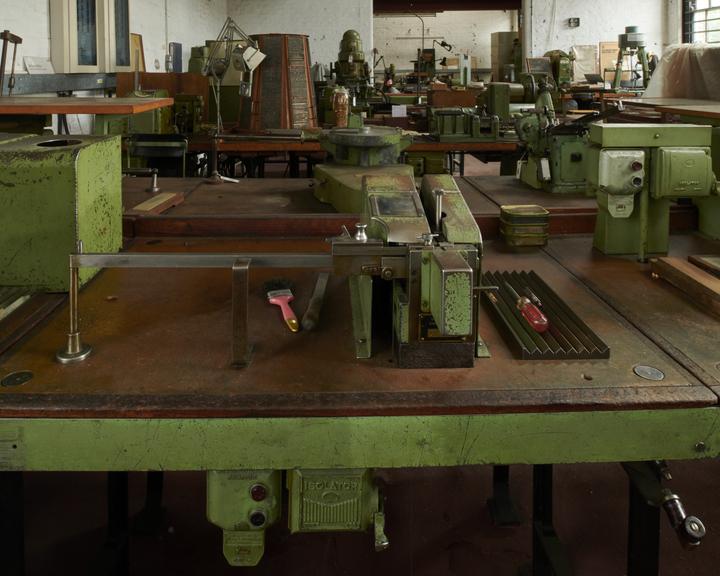





Matrix hand side-hole countersinking machine, Plant No. 986, made by the Lanston Monotype Corporation, Salfords, Redhill, Surrey, 1925. Used for the production system for 0.2 x 0.2-inch Monotype matrices, equipped for automatic handling of matrices from input to output galleys. Mounted on bench, with machines Nos. 990, 2080 and 1888. Bench has electrical and compressed air services incorporated.
This machine is one of many used in the process to make a 0.2-inch (0.51cm) or 0.4-inch (1.02cm) matrix. Some of the machines were designed at the Monotype factory in Salfords, Surrey, and other machines were purchased and adapted by Monotype.
There were 82 separate processes needed to transform a designer’s drawing of a letter, figure, punctuation or symbol into a piece of Monotype metal type for printing. A pantograph was used to trace and cut the letter from a copper pattern into a piece of steel called a punch. After being hardened, the punch was driven into a piece of bronze using a crank press to produce a matrix. The finished matrix was ready to go to the Monotype Composition Caster where molten metal was pumped through a mould against the matrix to produce a piece of type.
Details
- Category:
- Printing & Writing
- Collection:
- Monotype Corporation Collection
- Object Number:
- 1995-1591
- Materials:
- steel (metal), plastic (unidentified), glass, bakelite, copper (metal), brass (copper, zinc alloy) and aluminium alloy
- Measurements:
-
overall: 240 mm x 660 mm x 490 mm,
overall (bench): 890 mm x 3180 mm x 760 mm,
- type:
- machines




